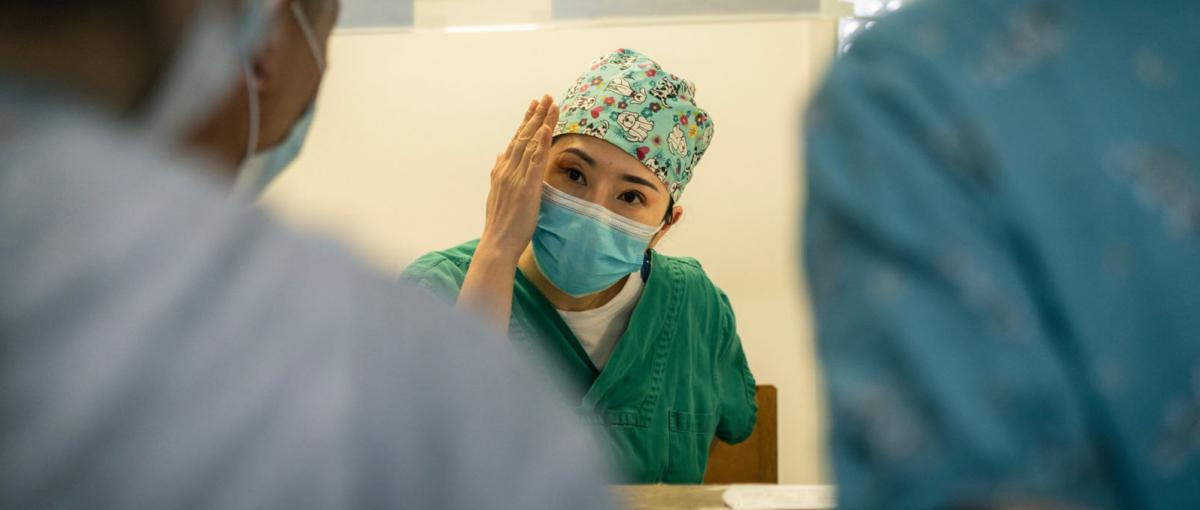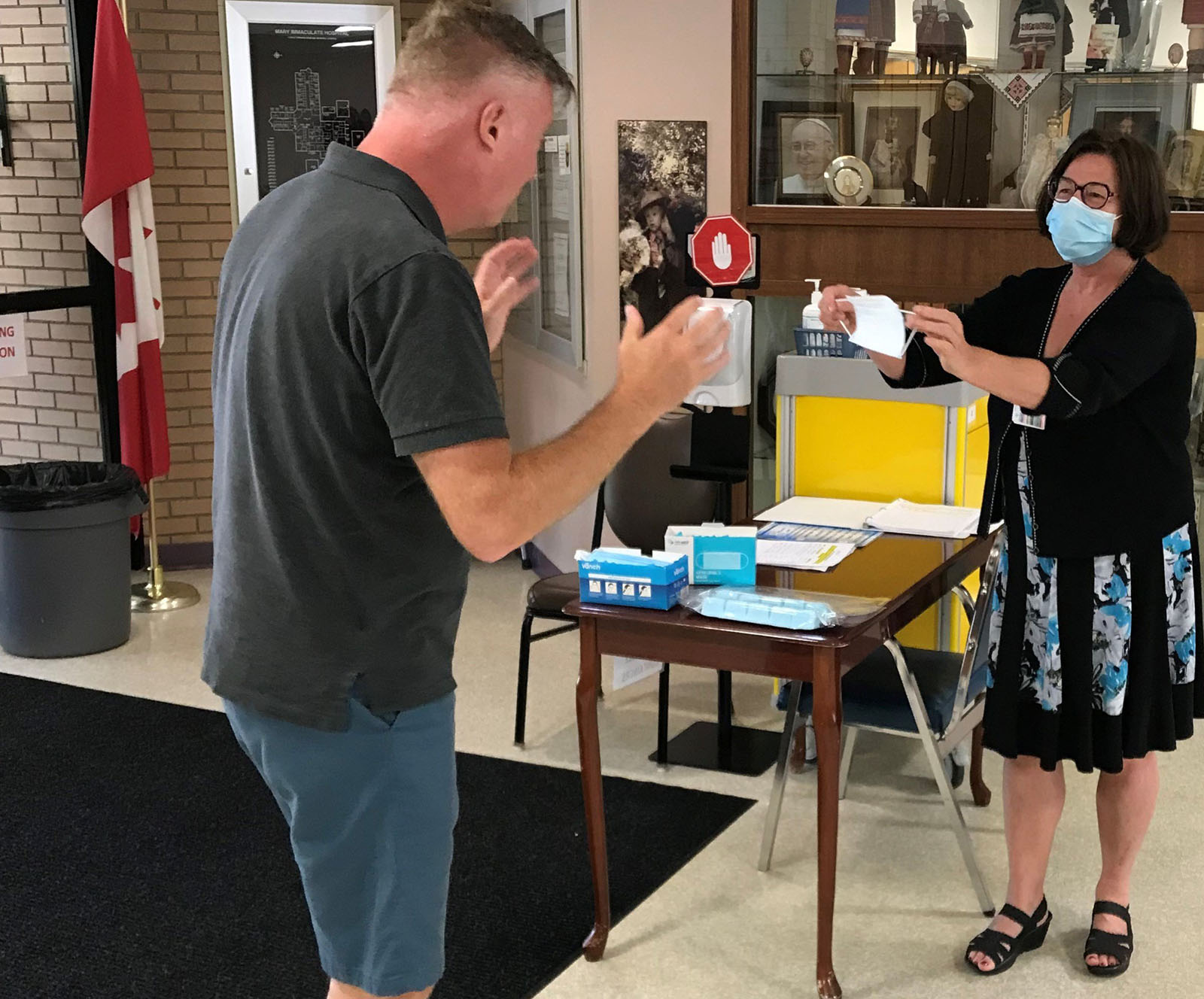Simulations help prepare staff for real-life situations
Staff participate in mock scenarios of violence and aggression

August 4, 2021
By Karen Cho, Senior Communications Advisor, Covenant Health
When Donna Jones started her shift as the nurse in charge on Killam Health Centre’s outpatient unit, she didn’t know a prisoner receiving care was going to become violent toward his escorting RCMP officer.
The prisoner was scheduled for an X-ray but became aggressive after his visit with the physician. He ended up in a skirmish with the RCMP officer, who was able to subdue him but asked staff to call for more backup. A Code White — an emergency response for a violent or aggressive person(s) — was immediately called, and shortly after, four more RCMP officers arrived to take the prisoner away.
“Everything went smoothly. We paged a Code White and called 911, and people came from all departments; everybody was here instantly,” says Donna, who was also screening patients and visitors that day.
It was a rare event for Killam team members, but they felt prepared due to simulation training that had just taken place. Donna explains that on that day two Code Whites — one simulated and one real — happened within an hour of each other.
“It was so fresh that everybody knew all the steps because we had just done them. We came together as a team. Nobody got hurt, the RCMP backup came and the prisoner got treated.”
Jill Soderstrom, simulation lead for clinical learning, and the emergency disaster management (EDM) team recently trained staff on how to react to Code White situations at Covenant Health sites across rural Alberta.
Jill says that the simulations, done in consultation with the EDM team and the rural leadership team, were well-received by staff. “They generated enthusiasm and great discussion among the staff.” Scenarios are not scripted, and the actors play off the reactions of staff to make the scenarios feel realistic.
“The goal is for them to call a Code White and have the staff respond. Ideally, they page through the overhead ‘Code White,’ and several people throughout the building will come down and assist in de-escalating the situation. When the RCMP comes, they take control, and that’s when we stop the simulation because we’ve met our objectives.”

While the simulations typically last only about five minutes, Jill says there is also significant value in the debrief, where feedback is given and questions are answered. “We give them tools on how to do better next time, if necessary, and instill the importance of calling a Code White and calling it sooner rather than later. We want them to keep themselves safe and not get in harm’s way.”
Emergency management officer Craig Smith, who played the role of a confrontational anti-masker with Donna, as well as other aggressor roles, says the 45 scenarios done with almost 400 staff at the sites have been successful.
“I think that staff thoroughly enjoyed this type of education and that the learnings have been incredible. It made an impact on them because they had to think on their feet. It’s muscle memory. By going through the steps to call a Code White, they’re more likely to remember it better than if they read the instructions on paper.”
Sheila Pasay, a registered nurse at St. Joseph’s General Hospital in Vegreville, says she valued the simulation, especially the discussion that followed. “The hands-on training, followed by the debrief with the trainers, will equip us to better respond to events in real life.”
Several of these simulations also involved participation from local RCMP, which made them even more realistic. Cpl. Raymond Stack of the Vegreville detachment was the officer who responded to the simulated 911 call made from Sheila’s unit. He came, answered questions during the debrief and provided safety and security suggestions based on his observations.
He says that being on the unit during the simulation allowed him to identify areas that could be improved upon so that any opportunity for danger can be mitigated. He adds that danger can present itself when it’s least expected, and common hospital items can be turned into “weapons of opportunity.”
Site administrator Kim Weinkauf says learnings from the simulations have been invaluable to her team at St. Joseph’s. “We have to be prepared every single moment of every day. Every second, every minute, counts because a Code White can go into a Code Purple (hostage taking or abduction) or to a Code Green (evacuation) — it can all play into one.”
Craig says this recent round of simulations may pave the way for similar collaborative work. “There is a natural synergy between the two groups, and it’s paid off dividends for the sites with the education they've received.”
Jill agrees that the outcome of the collaboration has exceeded expectations. “This has been so valuable that I see us continuing to collaborate to do more real-life simulations. It’s the front line that has exposure to this, and they need to know what to do in the first five minutes of a crisis and how to do the right things in a timely manner.”